Landscape and Biodiversity
Campus Biodiversity Survey
To learn about and manage the ecological environment and resources on campus, NTU has carried out regular Campus Biodiversity Survey since 2009, including the survey of birds, mammals, reptiles, insects, plants, and green coverage. The goal is to understand the distribution of various species on campus, as well as the rise and fall of native species and exotic species, the information of which will become a reference for NTU’s management of biodiversity. To increase participation in the ecological survey, domestic and international online resources are incorporated so that people can report sightings more easily, such as the black-crowned heron report system, the roadkill report system, ebird, and iNaturelist. Campus tours and training courses for volunteer tour guides are organized on a regular basis to help the faculty, students, and the public learn more about NTU’s ecological environment.
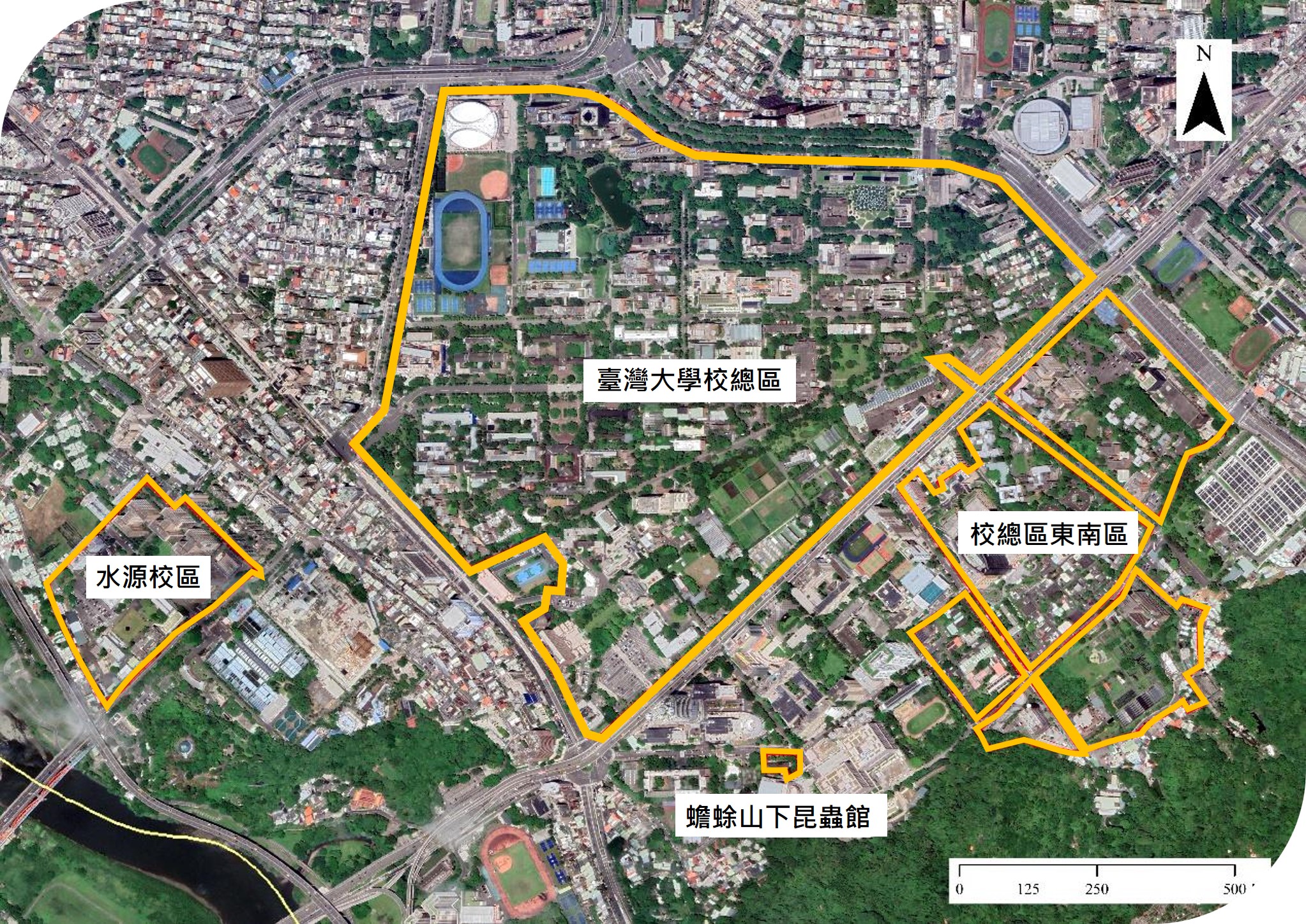
Conservation Actions
1. NTU Campus Tree Protection Project
There are a wide variety of trees on NTU campus, with more than 20,000 trees growing on the 40-hectaare main campus. Each year, NTU makes great efforts in maintaining the campus landscape by trimming trees and lawns, replacing flowers, preventing and controlling pests and diseases, and treating or removing diseased plants. As an important green space for the urban residents, NTU kicked off the “NTU Campus Tree Protection Project” in 2020, which solicited private donations to help with health inspection, pest prevention, and disease prevention of trees on campus as well as campus landscaping. Hopefully, the green assets on NTU campus will continue to flourish.
2. Language of Trees: NTU Tree Query System
The beautiful landscape on NTU campus shows different features in different seasons and has attracted visitors all year round. To help visitors identify trees that are protected and know which trees are in their best time of the year, all of the trees are labeled and listed in the Language of NTU Trees website, which provides a query system open to the public.
3. Experimental Forest
NTU Experimental Forest covers nearly 1% of Taiwan’s total area and boasts of bountiful forest resources. Its Xitou Nature Education Area attracts more than 2 million visitors every year. The Experimental Forest is always committed to helping the rural areas, conserving and preserving forests, and maintaining coexistence and co-prosperity with the locals. It has not only helped with the development of local industries and preservation of local culture, but has also actively conserved the forest ecology. In 2021, the first “Taiwan Sustainability Action Award (TSAA)” gave the Experimental Forest a silver award as a recognition of its efforts and achievements.

4. Prevent Bird Window Collisions
Nature abounds at NTU’s campus, but cities can be hazardous for wildlife. NTU Student Association’s Department of Sustainability, Institute of Ecology and Evolutionary Biology, Graduate School of Geography, Office of General Affairs, and faculty and students that care about wildlife work together to prevent bird window collisions. The picture shows some of the stickers on windows of Shih-liang Hall.
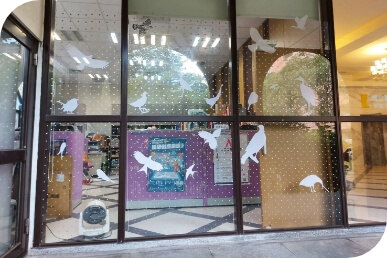
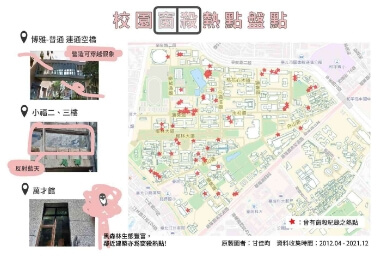
5. NTU Firefly Restoration Project
NTU kickstarted a restoration project for aquatic fireflies in 2021, with financial support from the Class of 1966 alumni and 1,200 larvae of Aquatica ficta generously donated by the Taipei Zoo. With the help of experts from NTU’s Department of Entomology, Department of Horticulture & Landscape Architecture and Experimental Farm, a clean, aquatic natural environment was prepared as a habitat for the larvae in the Crop Specimen Park near the planted areas along Zhoushan Road. At the end of August, 2021, river snails were released into the habitat as the food source for the fireflies, which would form a natural food chain. The firefly larvae were first released in December 2021 and later in February 2022. Along with lectures on the ecology of fireflies, participants of the events learned about the significance of firefly restoration in addition to biodiversity on campus. Hopefully, the restoration of fireflies will make people understand the importance of ecological sustainability. By spring 2022, the shining fireflies will be seen in NTU’s night sky.
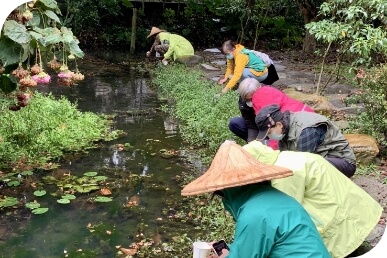
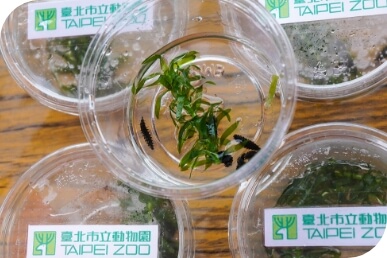
6. Lychee giant stink bug management
Instead of using pesticide sprays, NTU employs biological control methods by introducing Anastatus formosanus, a parasitic wasp that effectively reduces lychee stink bug populations. This approach has yielded positive results, significantly decreasing the number of lychee stink bugs on campus.
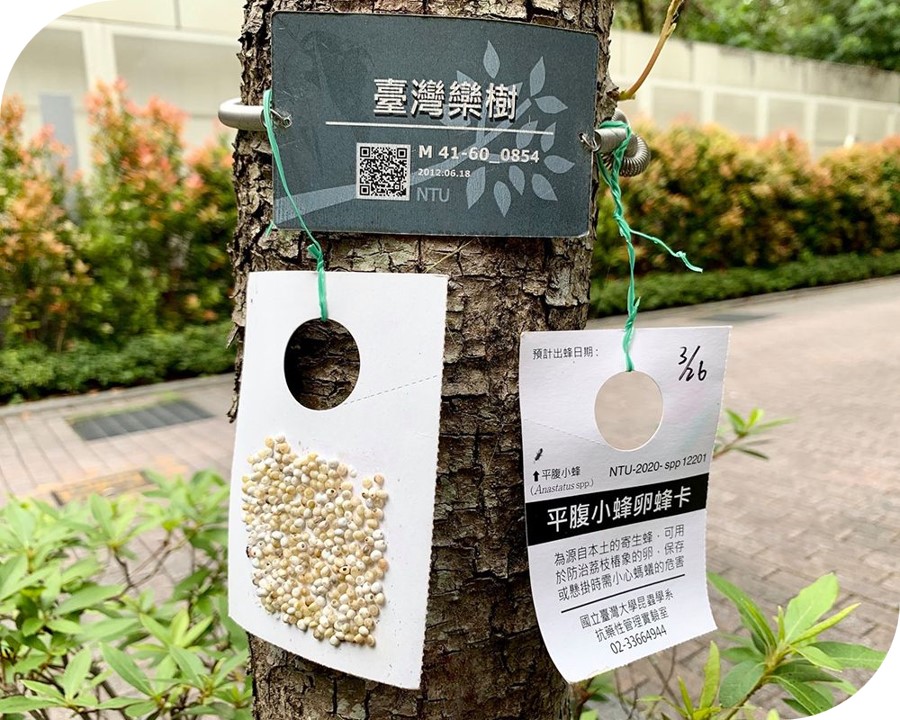
7. Azalea maintenance
Recent climate change, characterized by hot, dry summers and insufficiently cold winters, has posed challenges to azalea growth and flowering. However, through the dedicated efforts of the Office of General Affairs and the Department of Horticulture and Landscape Architecture, azaleas throughout the campus continue to produce vibrant blooms.
8. Campus tree re-survey project
In 2023, NTU commissioned a sample survey of campus trees by professors from the School of Forestry and Resource Conservation. The survey aims to understand tree mortality, growth patterns over the past decade, and potential carbon storage capacity.




